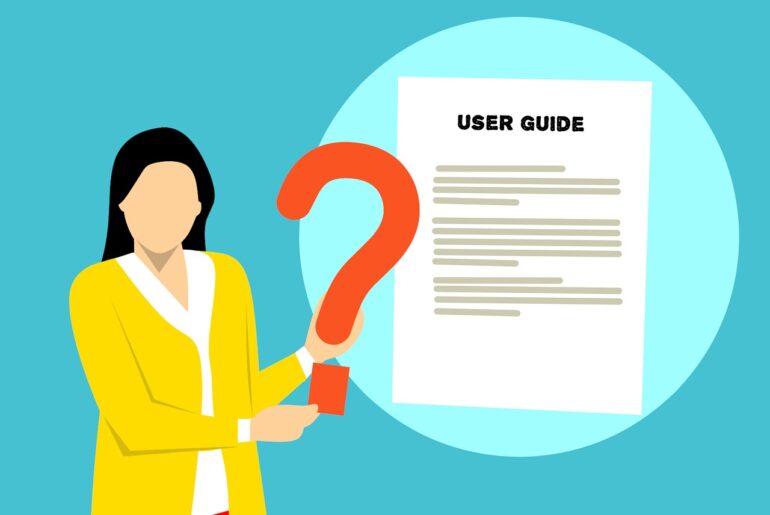Though it may not seem like it to the general public, documentation is one of the biggest challenges for the engineering and manufacturing industries. Large and complex machinery needs to be documented to the finest detail, from its individual parts to its exact repair process, for anything from aircraft engines to rockets, military vessels, or the large hadron collider.
As you can imagine, this can result in PDF files hundreds of pages long. Files that must be kept consistently up to date to be useful and have the potential to cause damage if they aren’t. This requires a lot of dedication and expense, so naturally manufacturers both want to make sure up-to-date versions are used and that they don’t fall into the hands of unauthorized parties.
The move to digital documentation has helped with the first issue – updating documents – but not with the second. In fact, digital documentation is far easier to copy and distribute for unauthorized repair services to use in anti-competitive ways. On top of this, Though it’s far easier to update and distribute documents, there’s little guarantee they’ll be used over outdated ones.
Using DRM
Thankfully, both of these problems can be remedied with the right document DRM software. A PDF DRM solution allows manufacturers to determine who can view and print these documents, how long they can use them, and from what devices and locations they can be used.
This kind of DRM works by combining a license system with a secure viewer application. Before a receiver can open the file, they require a license registered to their device that allows them to open a document in their app.
Manufacturers can additionally leverage the internet to update document controls remotely. This includes revoking them on the fly, updating documents, changing the expiry date, and more from a centralised point.
By expiring documents after a certain period, they can ensure that should a recipient try to use an old manual or parts lists, they’ll simply be presented with an error message and will be unable to access the document. If a new version is issued before a set date, they can revoke and update on the fly.
Meanwhile, to further prevent unauthorised sharing, it’s simple to enable anti-screen grabbing controls, add dynamic watermarks with user’s names, and implement tracking of views, prints, and active devices. Manufacturers can keep control over what devices manuals can be viewed on and even control the locations from where they can be viewed.
DRM vs Adobe Acrobat
Of course, solutions other than DRM exist to control document distribution, but they’re usually significantly more expensive, or cheap but ineffective. Take Adobe Acrobat as an example: it costs $15.70 per month and provides both a strong PDF editor and a permissions system to protect documents. Sounds pretty good – but its security and controls aren’t even close to what a DRM solution would provide.
Adobe PDF security primarily uses a password-based system to secure documents. You can choose to require a password on open and an additional one to edit or print the file. The problem? Poor implementation means that as soon as you have the password to open a file, you can easily remove any restrictions over use. There are dozens of freely available tools that will let you do this, meaning that whenever you share a document with somebody you risk them stripping its protection, copying it, and sending it to someone else. Or, they can simply send the password to somebody.
There are other flaws, too. Ideally, you want a separate password for each document, or you’ll have a single point of failure should one of the passwords get shared. Suddenly, you have a lot of different passwords to manage. To make them immune to brute forcing, they need to be long and complex – but long, complex passwords are a pain to remember and type in. This usually leads to a list of passwords being stored unsafely, or short passwords that are easily brute-forced by hackers.
Then there are Adobe’s permissions. Even if you don’t remove the editing permissions via cracking tools, there’s no protection against screenshotting. This means a user can simply screen grab your document, run it through a character recognition tool, and create a new, almost identical document.
A better alternative to PDF password protection is a PKI system – but they are expensive to manage and maintain, and complex to set up. If the people keeping on top of keys and certificates do make a mistake, everything can fall apart. As a result, they’re best utilized by very large enterprises – not the average ones. They’re also designed primarily to be used inside of an organization, not outside, which is far from ideal for our purpose, and don’t tend to offer easy expiry controls. In addition, any Adobe restrictions or permissions added to a document are still protected using a password.
For most engineering and manufacturing firms, then, DRM still provides the best cost-efficiency, leak protection, and document controls. Though a DRM solution is still more expensive than Acrobat, their ability to reliably keep manuals and parts lists private and up to date makes them worth every penny.


